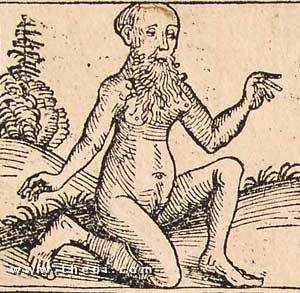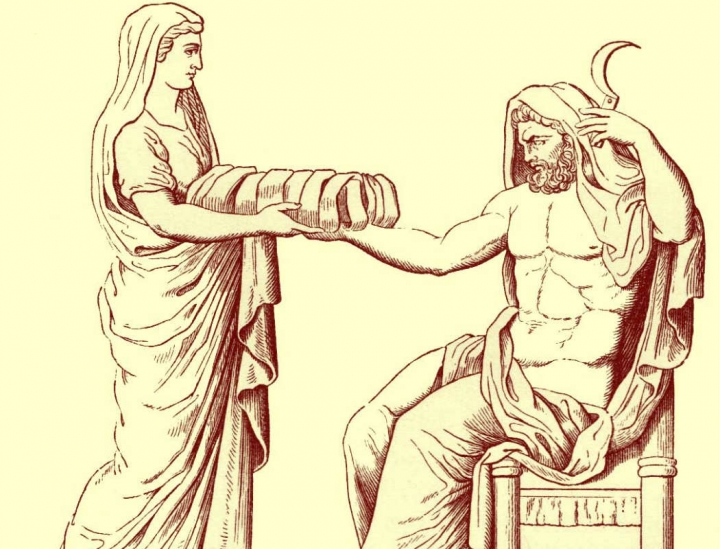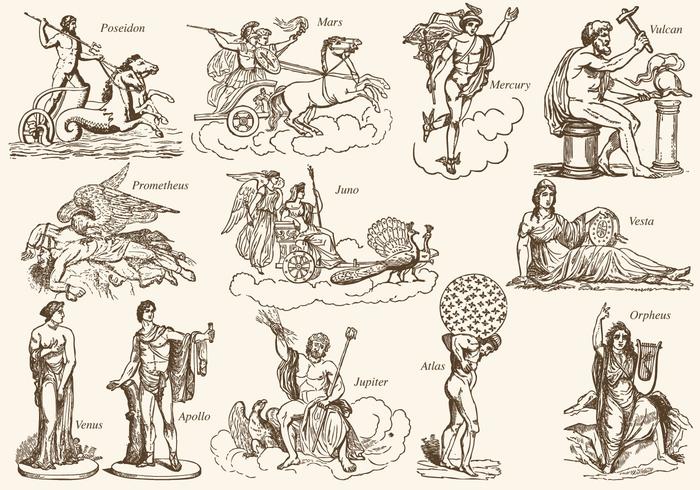Mission Statement
The Rant's mission is to offer information that is useful in business administration, economics, finance, accounting, and everyday life. The mission of the People of God is to be salt of the earth and light of the world. This people is "a most sure seed of unity, hope, and salvation for the whole human race." Its destiny "is the Kingdom of God which has been begun by God himself on earth and which must be further extended until it has been brought to perfection by him at the end of time."
Friday, August 30, 2019
Thursday, August 29, 2019
Public Relations: A Practitioner's Guide (part 5)
Communication
By
Charles Lamson
In the 21st century, the whole world is truly "wired." The power of communication, through the oral and written word and the images that flash around the world to millions of people in real time, is more awesome than any individual or group or even nation.
 |
What happens at a market in Baghdad is witnessed in a matter of seconds in Berlin and Bangkok and Boise. The world has become, as a twentieth-century communications professor once put it, "a global village."
And perhaps no individual is more responsible for this global phenomenon than this man:
Sir Arthur Clarke was the British Science Fiction novelist who, in 1945, wrote a short article that talked about combining the technologies of rocketry, wireless communication, and radar to envision an extraterrestrial system that relied on orbiting space stations to relay radio signals around the world.

FIGURE 1
Father of the communications satellite. Sir Arthur C. Clarke, science fiction novelist, in 1945 invented the concept that today beams images around the world in real time.
Today, more than 60 years later, Sir Arthur's vision has morphed into the global system of two dozen geosynchronous satellites that orbit 22,300 miles above the earth, transmitting words and images around the world at the speed of light. Thanks to the "Clarke Orbit" and the uplink technology that continues to be developed, events from wars to coronations to courtroom trials are now broadcast globally at 186,000 miles per second (Figure 2). Show trial. The murder and torture trial of Saddam Hussein, his half -brother Barzan Ibrahim al-Tikriti, and six co-defendants was broadcast for all the world to see in real time in 2005 and 2006.
As a consequence communication has never been a more potent tool, and communications must be handled with great care.
Which brings us back to public relations.
First and foremost, the public relations practitioner is a professional communicator more than anyone else in an organization, the practitioner must know how to communicate.

Fundamentally, communication is a process of exchanging information, importing ideas, and making oneself understood by others. It also includes understanding others in return. Indeed, understanding is critical to the communications process. If one person sends a message to another who disregards or misunderstands it, then communication has not taken place. But if the idea received is the one intended, then communication has occurred. Thus, a boss who sends subordinates dozens of emails is not necessarily communicating with them. If the idea received is not the one intended then the sender has done little more than convert personal thoughts to words---and there they lie.
Although all of us are endowed with some capacity for communicating, the public relations practitioner must be better at it than most. Before public relations practitioners can earn the respect of management and become trusted advisers, they must demonstrate a mastery of many communications skills---writing, speaking, listening, promoting, and counseling. Just as the comptroller is expected to be an adept accountant, and the legal counsel is expected to be an accomplished lawyer, the public relations professional must be the best communicator in the organization.

Goals of Communication
When communication is planned, as it should be in public relations, every communication must have a goal, an objective, a purpose. If not, why communicate in the first place? What are typical Communications goals?

The point is that whether written release, annual report, speech, or meeting---all are valid public relations communications vehicles designed to achieve communication goals with key constituent publics. Again, the best way to achieve one's goals is through an integrated and strategically planned approach.
Traditional Theories of Communication
In its most basic sense, communication commences with a source, who sends a message through a medium to reach a receiver who, we hope, responds in the manner we intended.
Many theories exist---from the traditional to the contemporary---about the most effective ways for a source to send a message through a medium to elicit a positive response. Here are but a few.
All of these theories and many others have great bearing on how public relations professionals perform their key role as organizational communicators.
Contemporary Theories of Communication
Many other Communications theories abound today as Internet communication changes the ways and speed at which many of us receive our messages. Professor Everett Rogers talks about the unprecedented "diffusion" of the Internet as a communications vehicle that spans cultures and geographics. Others point to the new reality of "convergence" of video, data and voice, mobile and fixed, traditional and new age communications mechanisms with which public relations professionals must be familiar.
The complexity of communications in contemporary society---particularly in terms of understanding one's audience---has led scholars to author additional "audience-centric" theories of how best to communicate.
These are but a few of the prominent theories of communications---all revolving around "feedback"---of which public relations practitioners must be aware.

*SOURCE: THE PRACTICE OF PUBLIC RELATIONS, 10TH ED., 2007, FRASER P. SEITEL, PGS. 45-49*
end
|
Tuesday, August 27, 2019
Monday, August 26, 2019
Public Relations: A Practitioner's Guide (part 4)
The Growth of Modern Public Relations
by
Charles Lamson
Ivy Lee helped to open the gate for modern public
relations. After he established the idea that high-powered
companies and individuals have a responsibility to inform
their Publics, the practice began to grow in every
sector of American society
 |
Government
During World War I, President Woodrow Wilson established the Creel Committee under the leadership of journalist George Creel. Creel's group, composed of the nation's leading journalists, scholars, and public relations leaders mounted an impressive effort to mobilize public opinion in support of the war effort and to stimulate the sale of war bonds through Liberty Loan publicity drives. Not only did the war effort get a boost, but so did the field of public relations. The nation was mightily impressed with the potential power of publicity as a weapon to encourage national sentiment and support.
During World War II, the public relations field received an even bigger boost. The office of War Information (OWI) was established to convey the message of the United States at home and abroad under the directorship of Elmer Davis, a veteran journalist, the OWI laid the foundation for the U.S. Information Agency as America's voice around the world.
World War II also saw a flurry of activity to sell war bonds, boost the morale of those at home, spur production in the nation's factories and offices, and, in general, support America's war effort as intensively as possible. By virtually every measure, this full court public relations offensive was an unquestioned success.
The proliferation of public relations officers in World War I led to a growth in the number of practitioners during the peace that followed. One reason companies saw the need to have public relations professionals to speak up for them was the more combative attitude of President Harry Truman toward many of the country's largest institutions. For example, Truman's seizure of the steel mills touched off a massive public relations campaign, the likes of which had rarely been seen outside the government.

Later in the century, the communications problems of President Richard Nixon surrounding the cover-up of the Watergate political scandal brought new criticism of public relations. But the subsequent administration of the great communicator Ronald Reagan reaffirmed the value of public relations.
Counseling
The nation's first public relations firm the Publicity Bureau was founded in Boston in 1900 and specialized in general press agentry. The first Washington D.C. agency was begun In 1902 by William Wolfe Smith, a former correspondent for the New York Sun and the Cincinnati Inquirer. Two years later, Ivy Lee joined with a partner to begin his own counseling firm.
The most significant counselor this side of Ivy Lee was Edward L Bernays who began as a publicist in 1913. He was the nephew of Sigmund Freud and author of the landmark book Crystallizing Public Opinion.
Bernays was a giant in the public relations field for nearly the entire century. In addition to contributing as much to the field as any other professional in its history, Bernays was a true public relations scholar. He taught the first course in public relations in 1923 and was also responsible for recruiting the field's first distinguished female practitioner, his wife Doris E. Fleischman.
Fleischman former editor of the New York Tribune, was a skilled writer, and her husband was a skilled strategist and promoter. Together they built Edward L. Bernays, Counsel on Public Relations into a top agency in many ways. Fleischmann was the "mother" of public relations, paving the way for a field that is today dominated by talented women (Figure 1) 
Figure 1
Dynamic duo. Edward L. Berneys and his wife, Doris Fleischman, formed the 20th century's greatest public relations tandem.
Berneys's seminal writings in the field underscored the importance of strategic communications advice for clients. For example, Berney's wrote:
At first we called our activity "publicity direction." We intended to give advice to clients on how to direct their actions to get public visibility for them. But within a year we changed the service and its name to "counsel on public relations." We recognized that all actions of a client that impinged on the public needed counsel. Public visibility of a client for one action might be vitiated by another action not in the public interest.
After Berneys's pioneering counseling efforts, a number of public relations firms most headquartered in New York began to take root, most notably among them Hill & Knowlton, Carl Byoir & Associates, Newsom & Company, and Burson-Marsteller. One of the earliest African-American counselors was D. Park Gibson, who authored two books on African American consumerism and advised companies on multicultural relations.
For many years, Hill & Knowlton and Burson-Marsteller jockied for leadership in the counseling industry. One early counselor, Harold Burson, emphasized marketing-oriented public relations "to help clients sell their goods and services, maintain a favorable market for their stock, and foster harmonious relations with employees."
In the 1990s, the counseling business saw the emergence of international super agencies, many of which were merged into advertising agencies. Indeed both, Hill & Knowlton and Burson-Marsteller were eventually merged under one corporation, WPP, which also includes the J. Walter Thompson and Young & Rubicam advertising agencies. Another mega-communications firm, Omnicom Group, owned seven major public relations firms including Fleishman-Hillard, Porter Novelli, and Ketchum. Despite these communications conglomerates, most public relations agencies still operate as independent entities.
In the 21st century then, the public relations counseling business boasts a diverse mix of huge national agencies, medium-sized regional firms, and one person local operations. Public relations agencies may be general in nature or specialists in everything from consumer products to entertainment to healthcare to technology.
Corporations
As the 20th century rolled on, the perceptual problems of corporations and their leaders diminished. Opinion polls after World War II ranked business as high in public esteem. People were back at work and business was back in style.
Smart companies---General Electric, General Motors, and American Telephone and Telegraph (AT&T), for example---worked hard to preserve their good names through both words and actions. Arthur W. page became AT&T s first public relations vice president in 1927. Page was a legendary public relations figure, helping to maintain AT&T's reputation as a prudent and proper corporate citizen. Page also was one of the few a public relations executives to serve on prestigious corporate boards of directors, including Chase Manhattan Bank, Kennecott Copper, Prudential Insurance, and Westinghouse Electric. Page's five principles of successful corporate public relations are as relevant now as they were in the 1930s:

Another early corporate public relations luminary was Paul Garrett. A former news reporter, he became the first director of public relations for General Motors in 1931, working directly for GM's legendary CEO Alfred Sloan. Garrett once reportedly explained that the essence of his job was to convince the public that the powerful auto company deserved trust, that is, " to make a billion dollar company seem small." Ironically, as good as Garrett was, he nevertheless reflected the universal public relations complaint still coming today, of "never feeling like an insider" within his organization.
*SOURCE: THE PRACTICE OF PUBLIC RELATIONS, 10TH ED., 2007, FRASER P. SEITEL, PGS. 31-34*
end
|
Saturday, August 24, 2019
Public Relations: A Practitioner's Guide (part 3)
Later American Experience
by
Charles Lamson
The creation of the most important document in our nation's history, the Constitution, owed much to public relations. Federalists, who supported the Constitution fought tooth and nail with anti-federalists, who opposed it. Their battle was waged in newspaper articles, pamphlets, and other organs of persuasion in an attempt to influence public opinion. To advocate ratification of the Constitution, political leaders such as Alexander Hamilton, James Madison, and John Jay banded together, under the pseudonym Publius, to write letters to leading newspapers. Today those letters are bound in a document called The Federalist Papers and are still used in the interpretation of the Constitution.
 |
After its ratification, the constitutional debate continued, particularly over the document's apparent failure to protect individual liberties against government encroachment. Hailed as the father of the Constitution, Madison framed the Bill of Rights in 1791, which ultimately became the first 10 amendments to the Constitution. Fittingly, the first of those amendments safeguarded, among other things, the practice of public relations: Congress shall make no law respecting an establishment of religion, or prohibiting the free exercise thereof; or abridging the freedom of speech, or of the press, or the rights of the people peaceably to assemble, and to petition the government for a redress of grievances.In other words, people were given the right to speak up for what they believed in and the freedom to try to influence the opinions of others. Thus was the practice of public relations ratified. Into the 1800s The practice of public relations continued to percolate in the 19th century. Among the more prominent, yet negative, antecedents of modern public relations that took hold in the 1800s was press agentry. Two of the better-known---some would say notorious---practitioners of this art were Amos Kendall and Phineas T. Barnum.  In 1829, President Andrew Jackson selected Kendall, a Kentucky writer and editor, to serve in his administration. Within weeks, Kendall became a member of Old Hisckory's "kitchen cabinet" and eventually became one of Jackson's most influential assistants. Kendall performed just about every White House public relations task. He wrote speeches, state papers, and messages, and turned out press releases. He even conducted basic opinion polls and is considered one of the earliest users of the "news leak." Although Kendall is generally credited with being the first authentic presidential press secretary, his functions and role went far beyond that position. Among Kendall's most successful ventures in Jackson's behalf was the development of the administration's own newspaper, the Globe. Although it was not uncommon for the governing administration to publish its own national house organ, Kendall's deft editorial touch refined the process to increase its effectiveness. Kendall would pen a Jackson news release, distribute it for publication to a local newspaper, and then reprint the press clipping in the Globe to underscore Jackson's nationwide popularity. Indeed, that popularity continued unabated throughout Jackson's years in office, with much of the credit going to the president's public relations adviser. Most public relations professionals would rather not talk about P. T. Barnum as an industry pioneer. Barnum, some say, was a huckster, whose motto might well have been "The public be fooled." Barnum's defenders suggest that although the impresario may have had his faults, he nonetheless was respected in his time as a user of written and verbal public relations techniques to further his museum and circus.  Like him or not, Barnum was a master publicist. In the 1800s, as owner of a major circus, Barnum generated article after article for his traveling show. He purposely gave his star performers short names---for instance, Tom Thumb, the midget and Jenny Lind, the singer---so that they could easily fit into the headlines of narrow newspaper columns. Barnum also staged bizarre events, such as the legal marriage of the fat lady to the thin man, to drum up free newspaper exposure. And although today's practitioners scoff at Barnum's methods, some press agents still practice his techniques. Nonetheless, when today's public relations professionals bemoan the specter of shysters and hucksters that still overhangs their field, they inevitably place the blame squarely on the fertile mind and silver tongue of PT Barnum.
Emergence of the Robber Barons
The American Industrial Revolution ushered in many things at the turn of the century, not the least of which was the growth of public relations. The 20th century began with small mills and shops, which served as the hub of the frontier economy, eventually giving way to massive factories. Country hamlets which had been the center of commerce and trade, were replaced by sprawling cities. Limited transportation and communications facilities became nationwide railroad lines and communications wires. Big business took over and the businessman was king.
The men who ran America's industries seemed more concerned with making a profit than with improving the lot of their fellow citizens. Railroad owners led by William Vanderbilt, bankers led by J.P. Morgan, oil magnets led by John D. Rockefeller, and steel impresarios led by Henry Clay Frick ruled the fortunes of thousands of others. Typical of the reputation acquired by this group of industrialists was the famous and perhaps apocryphal response of Vanderbilt when questioned about the public's reaction to his closing of the New York Central Railroad: "The public be damned!"

Little wonder that Americans cursed Vanderbilt and his ilk as "robber barons," who cared little for the rest of society. Although most who depended on these industrialists for their livelihood felt powerless to rebel, the seeds of discontent we're being sown liberally throughout society.
Enter the Muckrakers
When the axe fell on the robber barons, it came in the form of criticism from a feisty group of journalists dubbed muckrakers. The "muck" that these reporters and editors "raked" was dredged from the supposedly scandalous operations of America's business enterprises. Upton Sinclair's novel The Jungle attacked the deplorable conditions of the meatpacking industry. Ida Tarbell's History of the Standard Oil Company stripped away the public facade of the nation's leading petroleum firm. Her accusations against Standard Oil Chairman Rockefeller, many of which were unproven, nonetheless stirred up public attention.
Magazines such as McClure's struck out systematically at one industry after another. The captains of industry, used to getting their own way and having to answer to no one, were wrenched from their peaceful passivity and rolled out on the public carpet to answer for their sins. Journalistic shock stories soon lead to a wave of sentiment for legislative reform.
As journalists and the public became more anxious, the government got more involved. Congress began passing laws telling business leaders what they could and could not do. Trust-busting became the order of the day. Conflicts between employers and employees began to break out, and newly organized labor unions came to the fore. The Socialist and Communist movements began to take off. Ironically, it was a period when free-enterprise reached a peak in American history, and yet at that very climax, the tide of public opinion was swelling up against business freedom, primarily because of the breakdown in communications between the businessman and the public.
For a time, these men of inordinate wealth and power found themselves limited in their ability to defend themselves and their activities against the title wave of public condemnation. They simply did not know how to get through to the public to tell their side of the story. The business barons first tried using the lure of advertising to silence journalistic critics. They tried to buy off critics by paying for ads in their papers. It didn't work. Next, they paid publicity people, or press agents, to present their companies positions. Often these Hired Guns painted over the real problems of their client companies. The public saw through this approach.
Clearly, another method had to be discovered to get the public to at least consider the business point of view. Business leaders were discovering that a corporation might have capital, labor, and natural resources, yet be doomed to fail if it could not influence public opinion. The best way to influence public opinion, as it turned out, was through honesty and candor. This simple truth was the key to the accomplishments of American history's first great public relations counselor.
Ivy Lee: The Real father of modern public relations
Ivy Ledbetter Lee was a former Wall Street reporter, the son of a Methodist minister, who plunged into publicity work in 1903 (Figure 1). Lee believed neither in Barnum's public-be-fooled approach nor Vanderbilt's public-be-damned philosophy. For Lee, the key to business acceptance and understanding was that the public be informed.

Figure 1
Father of Public Relations. Ivy Lee.
Lee disdained the press agents of the time, who used any influence or trick to get a story on their clients printed, regardless of the truth or merits. By contrast, Lee firmly believed that the only way business could answer its critics convincingly was to present its side honestly, accurately, and forcefully. Instead of merely appeasing the public, Lee thought a company should strive to earn public confidence and goodwill.
In 1914, John D Rockefeller Jr., son of one of the nation's most maligned and misunderstood men, hired Lee to assist with the fallout from the Ludlow massacre affecting his Colorado Fuel and Iron Company. Lee's advise to Rockefeller was simple:
Tell the truth, because sooner or later the public will find it out anyway. And if the public doesn't like what you are doing, change your policies and bring them into line with what the people want.
Despite the tragedy of Ludlow, Lee encouraged Rockefeller to create a joint labor-management board to mediate all workers grievances on wages, hours, and working conditions. It was a great success the mine workers and the public began to see John D Rockefeller Jr. in a different light. Most important, he began to see them in a new light as well. As Rockefeller's youngest son, David, recalled nearly a century later, "My father was changed profoundly by his meetings with the workers. It was a lesson that stayed with him throughout the rest of his life and one of the most important things that ever happened to our family."
In working for the Rockefellers, Lee tried to "humanize" them, to feature them in real life situations such as playing golf, attending church, and celebrating birthdays. Simply, Lee's goal was to present the Rockefellers in terms that every individual could understand and appreciate.
Ironically, even Ivy Lee could not escape the glare of public criticism. In the late 1920s, Lee was asked to serve as an adviser to the parent company of the German Dye Trust, which, as it turned out, was an agent for the policies of Adolf Hitler. For his involvement with the Dye Trust, Lee was branded a traitor and dubbed "Poison Ivy" by members of Congress investigating un-American activities. Ironically, the smears against him in the press rivaled the most vicious ones against any of the robber barons.

Despite his unfortunate involvement with the Dye Trust, Ivy Lee is recognized as the individual who began to distinguish publicity and press agentry from public relations based on honesty and candor. for his seminal contributions to the field, Ivy Lee should be considered the real father of public relations.
*SOURCE: THE PRACTICE OF PUBLIC RELATIONS, 10TH ED., 2007, FRASER P. SEITEL, PGS. 26-31*
end
|
Thursday, August 22, 2019
Public Relations: A Practitioner's Guide (part 2)
The Growth of Public Relations
by
Charles Lamson
Unlike accounting, economics, medicine, and law, public relations is still a young field, not even 100 years old.
 |
Modern-day public relations is clearly a 20th century phenomenon. The impetus for its growth might, in fact, be traced back to this man: John D. Rockefeller Jr. was widely attacked in 1914, when the coal company he owned in Ludlow, Colorado, was the scene of a bloody massacre staged by Colorado militiamen and company guards against evicted miners and their families. When a dozen women and small children were killed at the Ludlow massacre, one of those Rockefeller called in to help him deal with the crisis was a journalist named Ivy Ledbetter Lee. Lee would go on to become "the father of public relations." His employer, John D. Rockefeller Jr., whose own legendary father had always adhered to a strict policy of silence, would bear responsibility for the birth of a profession built on open communications. The relative youthfulness of the practice of public relations means that the field is still evolving. It is also improving every day. The professionals entering the practice today are by and large superior in intellect, training and even experience to their counterparts of decades ago. The strength of the practice of public relations today is based on the enduring commitment of the public to participate in a free and open democratic society. At least five trends are related to the evolution of public relations:
 Ancient Beginnings
Although modern public relations is a 20th-century phenomenon. Its roots are ancient. Leaders in every great society throughout history understood the importance of influencing public opinion through persuasion. For example, archaeologists have found bulletins in Iraq, dating from as early as 1800 BC, that told farmers of the latest techniques of harvesting, sowing, and irrigating. The more food the farmers grew, the better the citizenry ate and the wealthier the country became. A good example of planned persuasion to reach a specific public for a particular purpose---in other words, public relations.
The ancient Greeks a also put a high premium on communication skills. The best speakers in fact where generally elected to leadership positions. Occasionally, aspiring Greek politicians enlisted the aid of sophists (individuals renowned for both their reasoning and there rhetoric) to help fight verbal battles. Sophists gathered in the amphitheaters of the day to extol the virtues of particular political candidates. Thus, the sophists sethe stage for today's lobbyists, who attempt to influence legislature through effective communication techniques. From the time of sophists, the practice of public relations has been a battleground for questions of ethics. Should a sophist or a lobbyist---or a public relations professional for that matter---"sell" his or her talents to the highest bidder, regardless of personal beliefs, values, and ideologies? When modern day public relations professionals agree to represent repressive governments, or to defend the questionable actions of troubled celebrities, these ethical question remain very much a focus of modern public relations.
The Romans, particularly Julius Caesar, were also masters of persuasive techniques. When faced with an upcoming battle, Caesar would Rally public support through published pamphlets and staged events. Similarly, during World War I, a special U.S. public information committee, the Creel Committee, was formed to channel the patriot sentiments of Americans in support of the U.S. role in the war. Stealing a page from Caesar, the committee's massive verbal and written communications effort was successful in marshaling national pride behind the war effort. According to a young member of the Creel Committee, Edward L. Bernays (later considered by many to be the father of public relations), "This was the first time in U.S. history that information was used as a weapon of war."  Even the Catholic Church had a hand in the creation of public relations in the 1600s under the leadership of Pope Gregory XV, the church established a College of Propaganda to help propagate the faith. In those days, the term propaganda did not have a negative connotation: the church simply wanted to inform the public about the advantages of Catholicism. Today, the Pope and other religious leaders maintain communications staffs to assist in relations with the public. Indeed, the chief communications official in the Vatican maintains the rank of Archbishop of the Church. Early American Experience The American public relations experience dates back to the founding of the republic. Influencing public opinion, managing communications, and persuading individuals at the highest levels were at the core of the American Revolution. The colonists tried to persuade King George III that they should be accorded the same rights as Englishmen. Taxation without representation is tyranny became their public relations slogan to galvanize fellow countrymen. When King George refused to accede to the colonists' demands, they combined the weaponry of sword and pen. Samuel Adams, for one, organized Committees of Correspondence as a kind of revolutionary Associated Press to disseminate anti-British information throughout the colonies. He also staged events to build up revolutionary fervor such as the Boston Tea Party, in which colonists masquerading as Indians boarded British ships in Boston Harbor and pitched chests of imported tea overboard---as impressive a media event as has ever been recorded sans television.
Thomas Paine, another early practitioner of public relations, wrote periodic pamphlets and essays that urged the colonists to band together. In one essay contained in his Crisis papers, Paine wrote poetically. "These are the times that try men's souls. The summer soldier and the sunshine patriot will, in this crisis, shrink from the service of their country." The people listened, were persuaded, and took action---testifying to the power of early American communicators.
*SOURCE: THE PRACTICE OF PUBLIC RELATIONS, 10TH ED., 2007, FRASER P. SEITEL, PGS. 22-26*
end
|
Subscribe to:
Comments (Atom)
-
That's what hip-hop is: It's sociology and English put to a beat, you know. Talib Kweli Inequalities of Social Class (...
-
I'm double majoring in social studies - which is sociology, anthropology, economics, and philosophy - and African-American studies. Yara...


